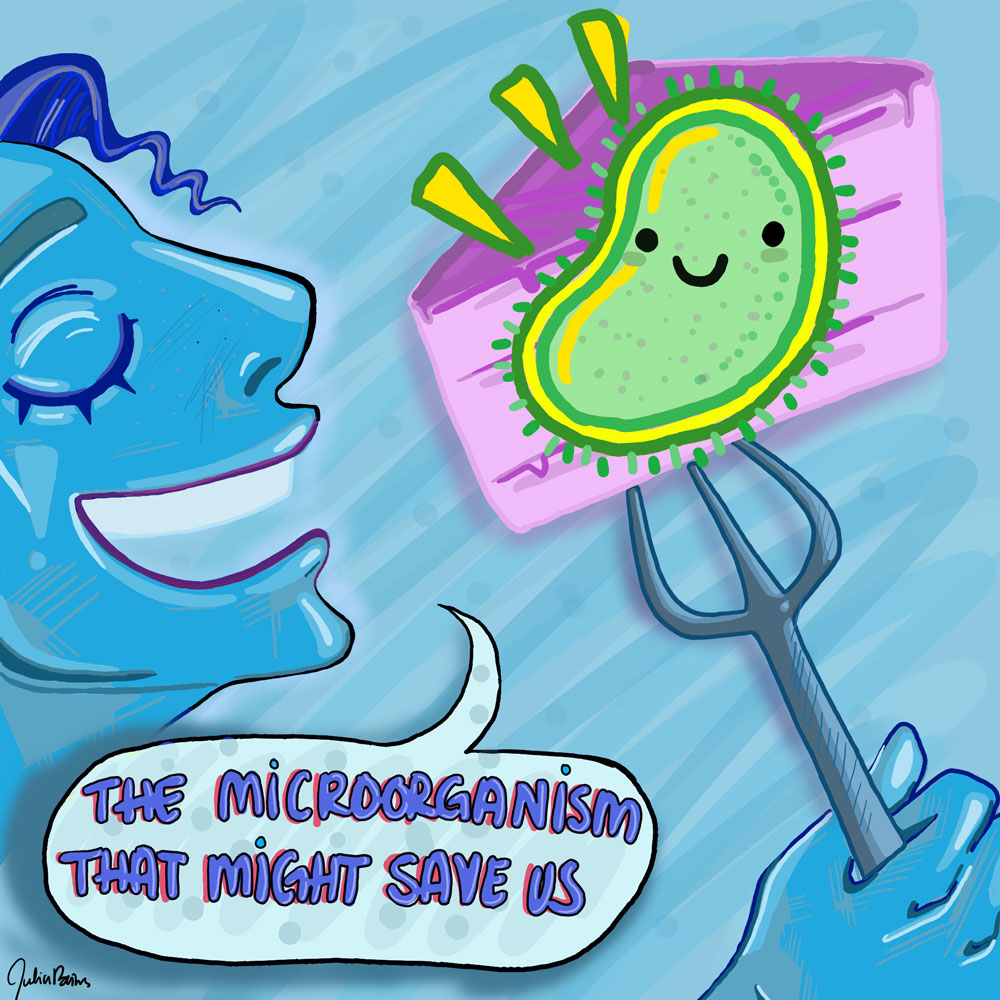
Written by Hayley McKay
Illustrated by Julia Bains
Ten billion people by 2050. It’s a statistic nearly everyone has heard. Coupled with the impending climate crisis, it seems nearly impossible humanity will be able to produce enough food to nourish such a massive global population. But there is one emerging ‘superfood’ that embodies every sense of the term: microalgae.
As a photosynthetic microorganism at the bottom of the food chain, microalgae are chock full of nutrients essential for the human diet. Even more importantly, they can be cultivated almost anywhere on earth. Microalgae, or Nannochloropsis (if you want to get technical), can live in just about any type of water, including brackish and seawater. They are rich in protein, omega-3 fatty acids, antioxidants and other essential amino acids, making them a great organism from which to produce dietary supplements. On top of all these features, microalgae are even taking it upon themselves to fight climate change – Nannochloropsis and related microalgal species are producing half of the world’s oxygen supply!
Microalgae’s potential has already been recognized by many scientists around the world as a clean, renewable source of biofuel, but their promise as a food source has only recently been appreciated. Enter iWi, a Texas-based microalgae cultivation company which aims to revolutionize the sustainable food industry. iWi uses massive saltwater ponds to grow its microalgae in places where absolutely nothing else grows (i.e. the New Mexico desert). Further evidence microalgae deserve the title ‘superfood’ is they actually produce more essential amino acids per unit of area than any other farmed food, and the only meal they need is sunlight!
As arable land able to sustain crop production becomes more and more scarce, microalgae’s ability to thrive in salt water will become a sought-after commodity. On top of decreasing availability of fresh water and rising temperatures, climate change is causing extreme weather resulting in flooding of once-productive farmland, killing crops with influxes of salty seawater. In theory, microalgae cultivation could replace some farming that once took place in regions where arable land no longer exists, resurrecting land productivity without competing with other crops for space or resources.
Although microalgae might not seem like a very appetizing dietary supplement, it tastes better than you might expect! Producers like iWi have put a lot of effort into ensuring flavour is not compromised when creating their supplements. In this day in age, an open mind is important when it comes to alternative food sources. We need to start recognizing and supporting innovations which efficiently produce high-quality nourishment without draining resources, unlike most of the current farming methods. Organisms like microalgae can help us transition to a more sustainable food production system that will be able to feed the growing global population and thrive in a climate-changed world.
Sources:
- https://massivesci.com/articles/algae-iwi-nannochloropsis-farming-desert-saltwater-ipcc-climate-change/
- https://massivesci.com/articles/ipcc-climate-change-food-desert-soil-warming-carbon-dioxide-co2/
- https://www.ipcc.ch/site/assets/uploads/2019/08/Edited-SPM_Approved_Microsite_FINAL.pdf
- https://www.sciencedirect.com/science/article/pii/S0960852417307927https://www.mdpi.com/1660-3397/9/4/625/htm
- https://iwilife.com/